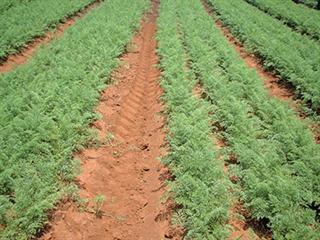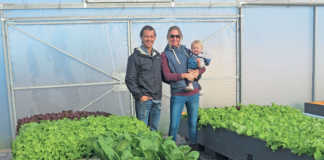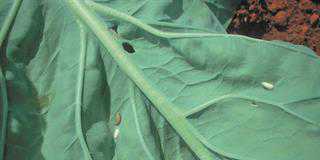
A farmer also has to determine what stand he requires to produce the size of carrot demanded by the market. This is not as simple as it sounds. If the stand is too dense, you are likely to get runts, which may have to be discarded or at least separated from the rest. Any carrot which is not marketed may be considered a weed. If there are enough of these, they will have the effect of lowering the marketable yield.
By the same token, if some are classified into a grade that commands a lower price, this will reduce your profit margin.
All of this may be caused by having the wrong stand.So why not simply go for a slightly lower population and harvest when the carrots are the correct size?
Unfortunately, it’s not that easy. Many varieties only form the correct shape when fully mature. Also, due to price- or weather-related circumstances, you might wish to harvest later than originally planned. And carrots in a thinner stand will keep on growing and perhaps become bigger than the size preferred by the market, so they fetch a lower price.
With the correct stand, they will reach their target size and stay more or less like that.
The optimal stand can differ according to season and latitude. The Southern Cape, for instance, with its longer hours of light in summer, can produce a higher yield/ha than is possible in Gauteng. For a given size of carrot, you can go for a denser stand in the Cape during this period and get up to 20t/ha more – simply due to daylight length.
Better crops in the Outer rows
In my early days of carrot growing, I decided to lay out a trial in order to learn more about spacing and fertilisation. We planted four rows on a bed running east–west. As this was a sub-tropical area, the planting was done in early winter. The stand was thinned to be the same throughout. Various fertilisers were then applied.
At harvesting, each row was lifted and weighed separately.
The row on the northern side of the bed consistently gave the same weight of carrots as both the inner rows together. The row on the south side yielded more than each of the inner rows but a fair amount less than the northern row. As it was winter and the sun was at a more acute angle, the differences were more exaggerated than would be the case in a summer planting.
Uniform-size seed
If you’re trying to grow a specific size, you could increase the plant population on the northern side by a fair amount in winter with east–west rows. In fact, a slightly higher population on both outer rows will be practical in all cases because of the extra sunlight received by these. Such fine-tuning can make a difference as the industry becomes more discerning and competitive.
In my experience, I have found four rows with a slightly wider distance between seeds to be best. In this way, you can maximise the sun capture in all situations.Sunlight is the ultimate limiting factor. Adding more water or fertiliser will have no effect, all things being equal. This is why it’s important to use uniform-size seed with a known germination time. For example, if you have a few seeds close together, and no uniform emergence, the last out will be shaded by the others and remain suppressed.
And this, in turn, is why good seedbed preparation and correct irrigation are important – and why larger farmers with the best planters have a strategic advantage. Your actual plant population should be just over a million plants per hectare.
Good farmers do counts at the four-leaf stage. They then refer to their notes at lifting and make further records. These can be useful for future plantings at other times of the year.












